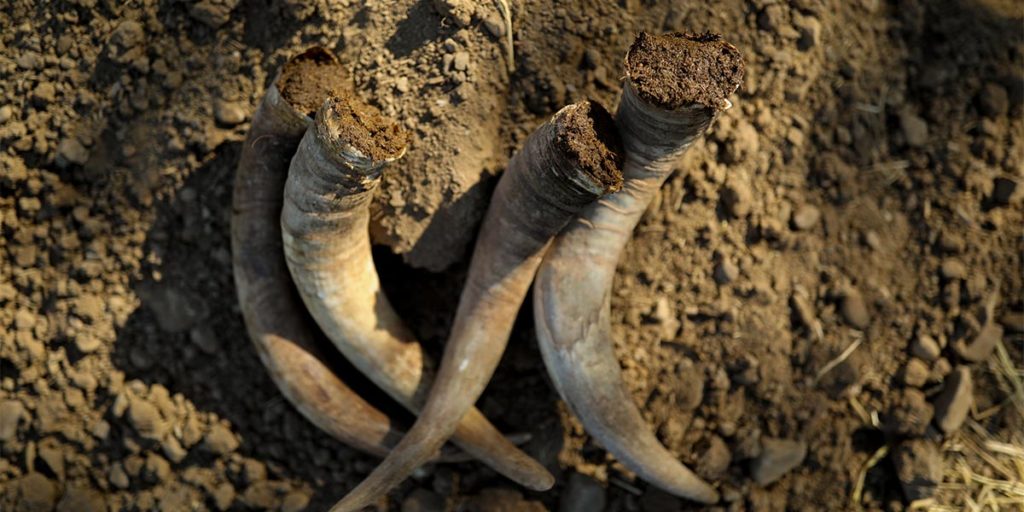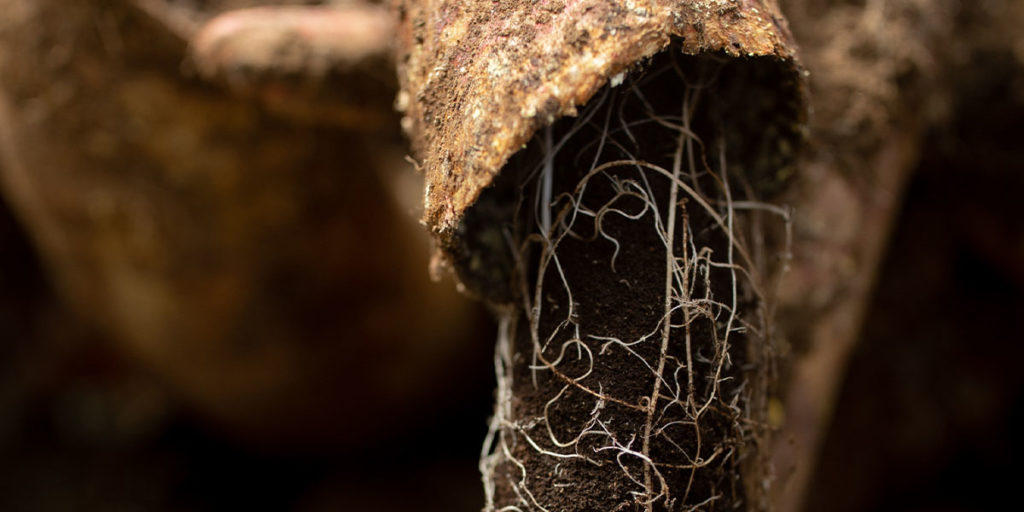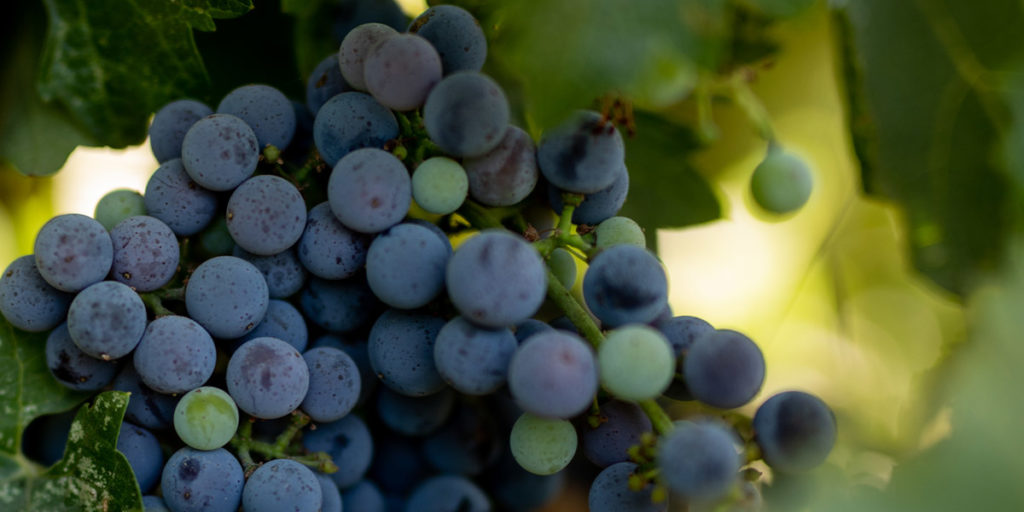Biodynamic preparation 500: What is cow-horn manure?
If you know anything about Biodynamic farming, you know that burying cow horns stuffed with cow manure (known as Biodynamic preparation 500) is part of the process. But why? More than ritualistic, this is one of the known Biodynamic preparations that is important for optimal soil health. At Eco Terreno, we follow this practice. We also see the results in our incredibly fertile soil and the pure, fantastic flavors of our Biodynamically farmed wines.
What are Biodynamic preparations?
“Biodynamic preparations” are combinations of fermented herbs, minerals, and manure designed to bring energy and vitality to a farm during its different seasonal growth cycles. There are nine Biodynamic preparations practiced in Biodynamic farming. Each of them is like a tonic or homeopathic remedy for the farm; in the same way we might take tonics for our health, the health of a farm is enhanced with the use of a variety of these all-natural solutions.
What is Biodynamic preparation 500?
Biodynamic preparation 500 is the most commonly used Biodynamic preparation. Its base is cow manure. But not the kind of cow manure you can buy at the nursery for your garden. Biodynamic preparation 500 uses fresh cow manure that’s packed into cow horns, buried into the ground at the beginning of fall. Six months later the cow horns are unburied, the organic matter is removed, dynamized with water and then sprayed on the soil during the winter and spring months. The burying of the manure allows it to ferment within the horns and become a concentrated loam-like material that smells sweet like the earth and is incredibly rich in desirable nutrients.

Why is Biodynamic preparation 500 buried in cow horns during fall/winter?
The timing of the burying matters. During fall and winter above ground is in its dormant stage. But below it’s a different story. Underground is a hive of activity; it’s teeming with bacteria and fungus thriving in the rain-dampened soil and it’s gobbling up all the nutritional deposits. Burying the manure-stuffed horns at this time allows them to engage with all this below-ground energy and capture it in the cow-horn manure. It’s actually possible to hear the activity that is going on within these horns while they’re buried!
How we use cow-horn manure
When we dig up the horns in early spring, they are coated in mycological activity. Inside, the cow manure has fermented and become incredibly potent during its time underground; it’s essentially undergone a supercharged soil inoculation with fungal and bacterial support.
Even though there is only about 60 to 100 grams (2.5 to 3.5 oz) of manure in each horn, this is enough to generously revitalize a hectare of land!
To easily distribute it, we dynamize it with water for an hour and make it into a spray.
We spray our vineyards with this powerful natural solution during the months of winter and spring. The mixing and spraying is something to see. We installed two 500 gallon stirring machines, with sufficient capacity to spray the entire vineyard in one go. We distribute the spray through our sprinkler system, rather than use fossil-fuel reliant machinery. This is just one of the many ways we lighten our footprint while being effective.

Why Biodynamic preparation 500 creates better tasting wines
Of course you won’t actually taste the preparation in our wines. But you will taste its amazing results: Biodynamic preparation 500 stimulates the vine by enhancing the soil’s health with a richer topsoil and more biodiversity within the humus (i.e. decomposed organic materials). Each grape growing on one of our vines absorbs its own natural environment, imparting a true flavor of its terroir.
Tasting the difference farming Biodynamically makes
When you drink any Eco Terreno wine, you will literally taste the pure, unadulterated flavors of the fruit and its natural environment—and we have one of the best, situated alongside the Russian River in Sonoma County’s famed Alexander Valley.
There’s more benefit than what’s in the glass, too. Supporting our vineyard means you are contributing to regenerative agriculture, the way we all need to farm for the good of the Earth and our immediate and extended community.

How to increase biodiversity in your own garden and soil in three easy ways
Increasing the biodiversity in your soil will lead to improved soil health and in turn vitality in your plants. At Eco Terreno we do this on a large scale, but the Biodynamic farming practices we employ are just as relevant for your own garden. Here are three simple and low-cost ways to increase your own soil biodiversity:
- Grow different plants
Unique ecosystems exist around individual plants, each with their own appeal. Their root systems alone vary from shallow roots to deep-rooted roots and from fine roots to coarse roots. Microorganisms are really no different to us, preferring a particular type of food over another. By mixing up the plants in your garden, and thereby providing different root systems, you will attract a diversity of good microorganisms wanting to create a habitat where nutrients are easily accessible.
- Apply compost to your garden
Compost is the gift that keeps on giving. When your soil is healthy, microorganisms multiply, depositing nutrients into the soil as they thrive, increasing the biodiversity in the soil and attracting more microorganisms. And the cycle continues. It’s probably the easiest and most cost effective way to increase organic matter in your soil and eliminate your need for fertilizer. Make it yourself, using a compost tumbler or even a wooden box or find bags of it at any nursery or hardware store.
- Layer your garden with mulch
It’s well known that a layer of mulch on your garden aids in water retention. Mulch helps by protecting it from the heat of the sun, maintaining a consistent soil temperature. Mulching also suppresses weeds, which struggle to grow without direct sunlight. It’s important to select the right kind of mulch, especially for long-term soil health. Choose organic mulch like wood chippings, shredded leaves, and newspaper sheets. Inorganic mulch like plastic sheets and gravel are not recommended. Not only do they require frequent replacing, but they add zero nutritional value to the soil. And the optimal time of the year to add mulch is during the fall. The rain will incorporate the mulch into the soil better, jumpstarting the decomposition process.
Join The Buzz – our mailing list with seasonal news from the vineyard and tips from our experts on living a more eco-friendly life.
